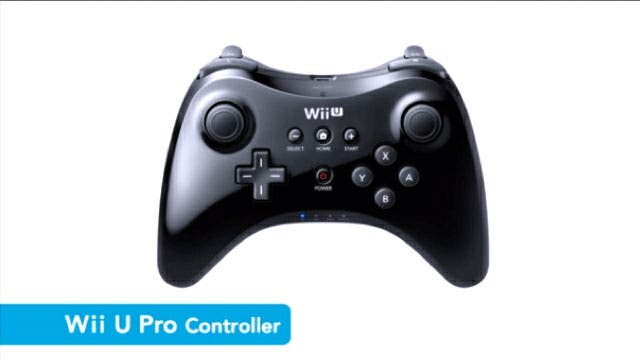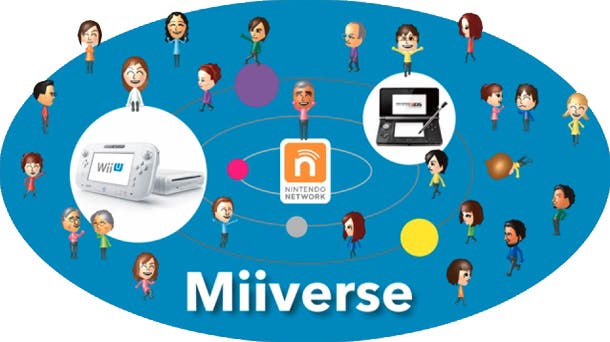E3 Reaction: Nintendo Direct Presentation Resets Expectations
What Satoru Iwata's YouTube reveal tells us about Nintendo's E3 strategy, Wii U's technical capabilities and lessons learned about online.
You fly halfway round the world to hear Nintendo's future plans and then what happens?
Well, in previous years, you would get up on the morning of Nintendo's E3 conference, open your hotel room door and find the big news splashed down a side column on the front page of USA Today sitting on your doormat.
Not so at E3 2012. Last night, for the first time in E3 history, Nintendo president Satoru Iwata delivered a 30-minute YouTube presentation, pre-recorded at the firm's Kyoto HQ, to update the world on the company's next-generation hardware.
This was an opportunity, Iwata said, to get the important hardware details out of the way ahead of Tuesday's press conference (5pm UK time, don't be late). "During that event," he said, "we'll be focusing almost entirely on games for Wii U."
Nintendo 3DS won't get a look in either, although Iwata says not to worry. "We also have plenty of news about Nintendo 3DS to deliver during other upcoming opportunities."
The headlines from the first ever Nintendo Direct Pre-E3 conference were the evolved Wii U GamePad and Xbox-like Pro controller and the online Wii U network called Miiverse, which uses the GamePad's portable screen to help you feel "together, better" at all times.
Watch the full presentation below if you haven't already. It's good fun.
But what else did we learn from Nintendo Direct? Below, Digital Foundry's Rich Leadbetter and Eurogamer editors Tom Bramwell and Martin Robinson consider the implications from technical, strategic and software points of view.
Tom Bramwell on Nintendo's E3 strategy
Last year the common consensus was that Nintendo botched the Wii U unveiling at E3. Not everyone grasped that it was a new console, the third-party software reel was science-fiction, and the tech demos on the show floor were promising but failed to make the same thrilling impact as DS and 3DS software teasers had at previous shows.
Nintendo's approach this year couldn't be more different. The decision to showcase the hardware in the controlled conditions of a 30-minute video presentation, unloaded onto YouTube at the peak of pre-E3 hysteria when everyone was guaranteed to pore over every detail, feels like the diametric opposite of the firm's 2011 approach.

Not only that, but we were told in no uncertain terms that Tuesday's press conference will focus on Wii U software. Even the poor old 3DS won't get a look-in. We will have to wait and see what form the Wii U software takes, of course, but a lot of commentators and analysts will be nodding appreciatively at Nintendo's newly found laser-like focus.
You don't have to be Siralan Lordsugar on The Apprentice to realise that less is more during the chaos of a show like E3, and Nintendo has now given itself every advantage on Tuesday. The hardware parameters are set. It's an HD console with a more social online service and two screens. Now we get to see whether Nintendo can recapture the software form that propelled the DS to success with Brain Training and the Wii to super-stardom off the back of Wii Sports and Wii Fit.
Mario and friends will be important, but a breakthrough idea with the same social appeal as Sports or Fit - something that embodies the new message, "together, better" - is vital. To borrow that Shigeru Miyamoto quote that Iwata likes, "A great idea solves multiple problems at the same time." Indeed, and by that token the right software may cure all Nintendo's ills.
Not everyone will be placated by all this. As Patrick Garratt argues over at VG247, this still looks like a closed platform and the balance between casual and core will be hard for Nintendo to find.
Overall, though, the Nintendo Direct presentation itself feels like an inspired move. Not only is it pitched to capture people's attention at a time when there's little else to divide it, but it means that we go into Tuesday's conference with questions and anticipation, rather than lingering uncertainty held over from E3 2011.
Perhaps most importantly, however, it also means that Nintendo enjoys both the first and last word at E3 2012, with its actual conference not set to take place until after Microsoft and Sony's. What a start to the week.
Rich Leadbetter on the Wii U tech implications
Nintendo's message here was strong - particularly in terms of its social network features - but funnily enough it was the smaller details that leapt out at me.
To begin with, while the main GamePad has been nicely redesigned, I noticed that the base Wii U unit itself seems to have been left virtually unchanged from its E3 debut last year. Form factor of a console is hugely important when it comes to housing hot components like the CPU and GPUs found in HD games consoles, and the fact that the Wii U was - and is - so small reinforces my belief that we have to be realistic about the rendering power this machine possesses.

While we need to cautious about the Wii U's next-gen credentials, I can't wait to see what some of the best games development teams in the world produce with access to more modern rendering power. The few short seconds we saw of New Super Mario Bros., looking much improved over last year's barebones E3 demo, were intriguing.
I was also taken with the notion of the GamePad working as an autonomous unit centred on social network messaging, adding a richness to the experience that we don't really see on Xbox Live or PlayStation Network. There have been rumours that the Wii U possesses a lot of internal memory (significantly in excess of 1GB, depending on which leak you believe) but apparently a decent percentage of it is dedicated to the core operating system.
Perhaps now we have some context to the rumours, because running the GamePad externally on non-game-related features is going to require a decent amount of onboard memory. If the horrifyingly poor videochat segment in the briefing is in anyway indicative of the actual experience, it also seems to be suggesting that that game remains in RAM while video conferencing is active. Again, that's going to require significant amounts of memory, but it could be worth it if you can dip in and out of these features from a game's pause state.
Overall, I liked what I saw from this presentation. I'm still not completely buying in to the advantages of dual screens in typical gameplay scenarios, but it finally looks as though Nintendo is moving into the 21st century with its online focus and I loved the visualisation of player movements across the Miiverse. If the focus on fresh new gaming ideas is on the same level, we should be in for a treat.
Martin Robinson on lessons learned from wikis and Dark Souls
Connectivity was always going to be the cornerstone of the Wii U experience - but the enthusiasm and eccentricity of its approach couldn't fail to excite as it was outlined in Satoru Iwata's YouTube keynote last night. Nintendo's been in a bubble for far too long when it comes to online, and the Miiverse bursts it in some delightfully unexpected ways.
"Certainly, the idea of a video game network is not new," admitted Iwata as he delivered his sermon against a stark pine backdrop in an unspectacular corner of Nintendo HQ - but there's enough that's fresh and distinctive about the Miiverse to make it feel as fresh and invigorating as the Wii's controller was when it first broke cover.

On a base level, in fact, there's not much that's new about Nintendo's Miiverse. It's a system that sits front and centre of the Wii U's interface, and one that sits on top of the console's games, accessible at any point and feeding in, at varying degrees, to the game experience itself.
What's different, as ever with the house of Mario, is that Nintendo touch. It's there in the console menu itself, a number of Miis gathering around various icons in what's been dubbed the Wara Wara - which roughly translates as the lively din that's made by crowds. It's warm and it's welcoming, a smiling invitation to play rather than an obfuscated set of menus.
It's a difference that's seen in the way that the Miiverse encourages conversations around a game, a cobbling together of systems popularised by existing social networks that's been brought alive by hand-drawn messages similar to what we've seen in FlipNote Studio and Swapnote, introducing a charming human element.
And it's there in the asynchronous messaging system that the Miiverse brings to the games itself, an idea that's seemingly wandered in from an unlikely but very welcome source, From Software's exceptional Demon's Souls and Dark Souls.
It promises in-game FAQs and advice from friends and others who've faced the same perils, and it also promises to bring the conversation around the game into its own universe, a smart acknowledgement of the way that we consume our media. It's not unusual when playing a game to be juggling message boards, scouring review sites or chronicling our progress via social networks - and now that's something that's all been collated into one device.
It's easy to get carried away, and I'll admit that I've just done so myself; let's not forget that as exciting as Demon's Souls in-game messaging system was, part of the pleasure came from how it was open to exploitation - and that's a pleasure that will be nullified when it's potentially at the backbone of a console's back catalogue.
And, for all that the Miiverse seems exciting right now, there's every possibility that it could still find itself where Xbox Live is: a hostile environment patrolled by primitive online barbarians, where the charm of a hand-crafted message could be usurped by the menace of a hastily scrawled death threat.
But I've faith in Nintendo's policing, and of how the philanthropic idea on which the Miiverse has been built - that of "together, better", and of unifying the family living room that's been torn apart by single-screen devices - will filter through into the way that people engage with it.
There's a strength of philosophy that was evident throughout the Nintendo Direct unveiling of the Wii U - and a coherence that was entirely lacking when it was revealed 12 months ago - and it's something that I can't see either Microsoft or Sony replicating.

